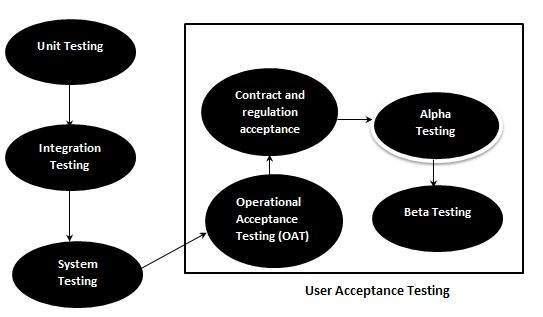What is User Acceptance Testing?
User acceptance testing, a testing methodology where the clients/end users involved in testing the product to validate the product against their requirements. It is performed at client location at developer's site.For industry such as medicine or aviation industry, contract and regulatory compliance testing and operational acceptance testing is also carried out as part of user acceptance testing.
UAT is context dependent and the UAT plans are prepared based on the requirements and NOT mandatory to execute all kinds of user acceptance tests and even coordinated and contributed by testing team.
User Acceptance Testing - In SDLC
The following diagram explains the fitment of user acceptance testing in the software development life cycle: The acceptance test cases are executed against the test data or using
an acceptance test script and then the results are compared with the
expected ones.
The acceptance test cases are executed against the test data or using
an acceptance test script and then the results are compared with the
expected ones. Acceptance Criteria
Acceptance criteria are defined on the basis of the following attributes:- Functional Correctness and Completeness
- Data Integrity
- Data Conversion
- Usability
- Performance
- Timeliness
- Confidentiality and Availability
- Installability and Upgradability
- Scalability
- Documentation
Acceptance Test Plan - Attributes
The acceptance test activities are carried out in phases. Firstly the basic tests are executed and if the test results are satisfactory then the execution of more complex scenarios are carried out.The Acceptance test plan has the following attributes
- Introduction
- Acceptance Test Category
- operation Environment
- Test case ID
- Test Title
- Test Objective
- Test Procedure
- Test Schedule
- Resources
- Accept the system as delivered
- Accept the system after the requested modifications have been made
- Do not accept the system
Acceptance Test Report - Attributes
The Acceptance test Report has the following attributes:- Report Identifier
- Summary of Results
- Variations
- Recommendations
- Summary of To-DO List
- Approval Decision